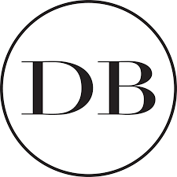Maria Pallante
Blockchain Loyalty—Help or Hype?

It’s been close to a decade since blockchain technology surfaced, offering the tech community new possibilities and multiple uses. In our innovation lab, we’ve been exploring blockchain technology over the last few years; testing use cases with partners and clients, and continuing to examine whether the technology is helpful for customer engagement and loyalty purposes, or if it’s just hype?
I recently had the distinct pleasure of attending Loyalty Live in Chicago, organized by the Untraceable Event team. The two-day conference brought together experts to debate and discuss potential applications for blockchain technology and loyalty. While I may not have agreed with all the opinions expressed, having a forum for the discussion was extremely fruitful.
What is Blockchain Technology?
Although the technology has been around for 10 years, the question remains: “What is blockchain technology?” Introduced in 2008, blockchain focused on a peer-to-peer version of sending currency electronically without going through a financial institution; this technology enabled the launch of Bitcoin and evolved to enable the launch of other cryptocurrencies like Ether.
Today, there are two forms of blockchains—the first being a Public Blockchain, which is what bitcoin is run on and which is reliant on a network of users. All data is published to the blockchain and is immutable (can’t be changed) once recorded. When someone wants to make a transaction or transfer funds to someone else, miners on the blockchain will validate the transaction, and once validated, it gets added to the blockchain.
The second type of blockchain is the Private Blockchain, where the technology is used in a closed environment for enterprise purposes. The blockchain properties remain, but the focus is very much on business application. If you’re interested in learning more about blockchain, I recommend the following resources:
- The Blockchain Institute
- Blockchain Loyalty
- Bitcoin: A Peer-to-Peer Electronic Cash System by: Satoshi Nakamoto
- Blockchain Loyalty by: Philip Shelper
Five Things You Need to Know About Blockchain Loyalty
Loyalty Live focused on bridging the gap between the world of loyalty rewards with the world of blockchain technology. The conference surfaced key loyalty and technology concepts around enterprise, big data, payments, and loyalty rewards. However, there were five important takeaways to note:
- Blockchain is another type of database software.
It is an encrypted database architecture that logs and links all transactions on a distributed ledger among multiple parties. That said, if your current database works for your needs, experts say, “don’t change it—at least right now.” Blockchain should only be introduced if there is an appropriate benefit. Consumers don’t care about what technology powers the experience—they care about the experience. - Blockchain as a technology is still in its infancy.
It’s important to recognize there are many issues related to scalability and performance. Consider this example: VISA processes 24,000 transactions per second, while public blockchains process four to 10 transactions per second. This will improve over time, but for now, it wouldn’t be advisable for brands to use a public blockchain to manage their loyalty database. - Personal data should not be included in any blockchain application.
Blockchain promises that data can never be changed or is immutable. New GDPR regulations stipulate the right for a consumer to be forgotten. To avoid this conflict, it is recommended that personal data never be included in a blockchain. - The industry is exploring using blockchain to introduce cryptocurrencies instead of or as a replacement for points or miles.
One of the suggestions made for loyalty included the idea of introducing or launching a cryptocurrency instead of or as a replacement for points or miles. I believe it is more valuable to test how blockchain can support a partner ecosystem to reduce the cost of adding redemption or earn partners and the associated financial reconciliation and settlement processes. This is where further testing is required to prove out the value of investing in blockchain. - Loyalty program design flaws related to how members earn or redeem cannot be fixed by technology.
Whether it’s blockchain or any other technology, a flawed program design will not be resolved by technology. Often, there are strategy and business decisions related to the program that need to be revisited to drive customer engagement.
Outside of loyalty, how is blockchain reshaping brands and the way we conduct business?
 |
Walmart has applied blockchain technology to manage food traceability across the entire supply chain with the goal of improving food safety. Blockchain is expected to improve the retailer’s ability to track and identify the source of any issue or outbreak such as E. coli. |
 |
Ticketmaster just acquired UPGRADED, a blockchain technology company, to help Ticketmaster convert traditional tickets into secure interactive digital assets protected by blockchain. The technology is poised to provide event creators with more control and visibility over ticket distribution and protecting fans against fraudulent tickets. |
 |
De Beers Group has been piloting a project to track diamonds from the mine to retail. The technology is leveraged to track gems and counter blood diamonds and fakes. |
Glossary of Terms:
Immutable: Unchanging over time or unable to be changed.
Fungible: Able to replace or be replaced by another identical item; mutually interchangeable. Something fungible can be exchanged for something else of the same kind.
Miners: Superusers on public blockchains with powerful computers. Miners validate new transactions and record them on the global ledger (typically on public blockchains). On average, a block (the structure containing transactions) is mined every 10 minutes. Miners compete to solve a difficult mathematical problem based on a cryptographic hash algorithm. The solution found is called the Proof-Of-Work. Miners can also receive rewards in the form of transaction fees.